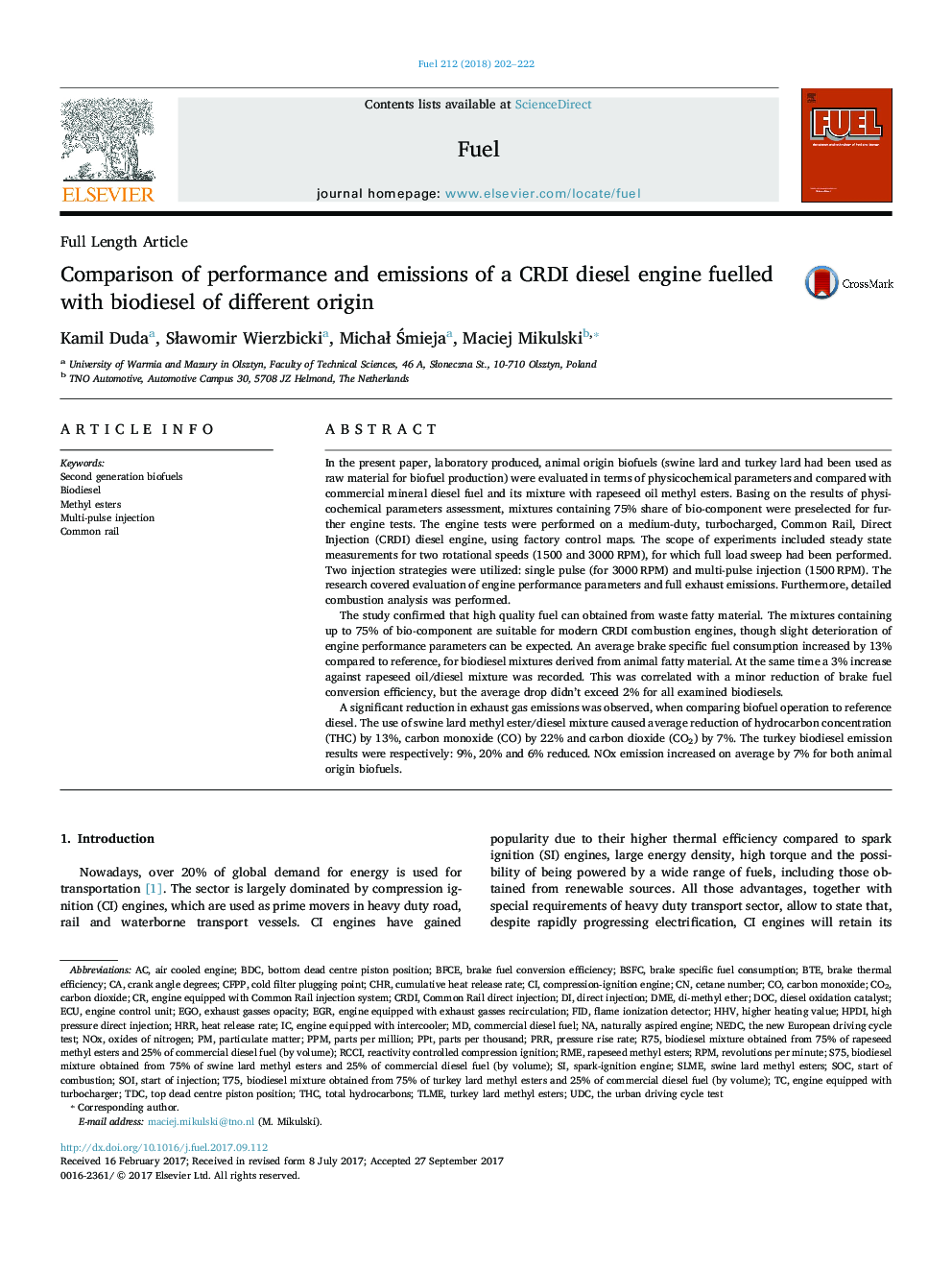| Article ID | Journal | Published Year | Pages | File Type |
|---|---|---|---|---|
| 4768270 | Fuel | 2018 | 21 Pages |
Abstract
A significant reduction in exhaust gas emissions was observed, when comparing biofuel operation to reference diesel. The use of swine lard methyl ester/diesel mixture caused average reduction of hydrocarbon concentration (THC) by 13%, carbon monoxide (CO) by 22% and carbon dioxide (CO2) by 7%. The turkey biodiesel emission results were respectively: 9%, 20% and 6% reduced. NOx emission increased on average by 7% for both animal origin biofuels.
Keywords
RMERPMPPTHRRppmECUPRRRCCIChrNEDCDOCHHVDMEcRDISOIBDCcumulative heat release rateEGRUDCHPDIparts per thousandTHCBSFCCFPPTDCNOxReactivity controlled compression ignitionflame ionization detectorOxides of nitrogenBiodieselbrake specific fuel consumptiondirect injectionCommon Rail direct injectionCetane numberFIDCrank angle degreesDi-methyl etherCarbon dioxideparticulate matterBrake thermal efficiencyCommon Railrevolutions per minuteSOCStart of combustionStart of injectionparts per millionMethyl esterscarbon monoxideSpark-ignition engineCompression-ignition enginePressure rise rateHeat release rateSecond generation biofuelsEgoCold filter plugging pointEngine control unitBTEdiesel oxidation catalystCO2Total hydrocarbonsHigher heating value
Related Topics
Physical Sciences and Engineering
Chemical Engineering
Chemical Engineering (General)
Authors
Kamil Duda, SÅawomir Wierzbicki, MichaÅ Åmieja, Maciej Mikulski,
